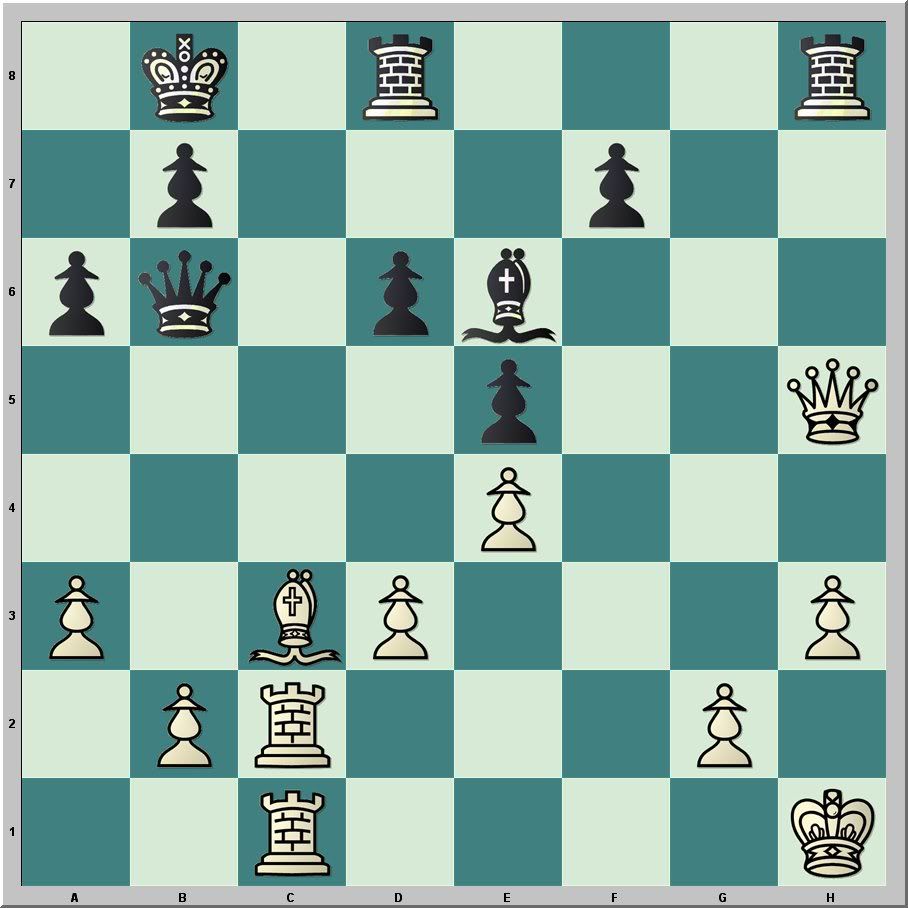Today the program froze for several minutes, and I lost two minutes on the game clock--kind of frustrating in a game 10. Even so, I was doing okay until I reached this position.
White to move

I played 28.Qd1, opening myself to an unstoppable attack. This error was the game losing move.
The game finished:
28...Bxh3 29.gxh3 Rxh3 30.Rh2 Rxh2+ 31.Kxh2 Qf2+ 32.Kh3 Rh8+ 33.Kh4 Qf4#
Here's my beef: the post-game analysis tells me that my "worst move" was 31.Kxh2--the only legal move in the position. I suppose the software thinks I should have resigned inasmuch as it is mate in five.
Such post-game analysis distracts the chess student from a necessary task: identifying the key turning point in a game. Instead Chessmaster highlights the move that changes by the greatest margin the numerical evaluation in an easily won, or completely lost position. This feature is a disservice to users of Chessmaster software. Bad advice can be worse than none at all.
In contrast, Fritz (Hiarcs, Junior, etc.) does not offer numerical analysis at all from move 29 on. Rather, it is mate in 12, mate in 6, and mate in 1 after White's suboptimal moves.
From the diagram position, 28.Qf3 maintains White's advantage. All other moves shift the advantage to Black, my Qd1 decisively so. If one is using software in training, it should help identify the key position, not offer phantom assessments after the battle has been decided.













I must say that i find 28. Qf3 the logical move in that position since 28. Qd1 blocks the c1 rook into its movement along the back rank since it seems logic to me that for the moment you dont have any advantage to controle the c-file.
ReplyDeleteDid you try to analyze this game with Rybka? It should bring new lights IMO ;)
ReplyDeleteThanks for the comment Chess engines. I noticed that your name links to FICGS where I have played a few dozen games. Great site!
ReplyDeleteI do not have Rybka 3, and Rybka 2.2 is weaker than Hiarcs 12. Even so, I use Rybka 2.2 to analyze some positions. I've recently started using Stockfish 1.6, the strongest free engine. In tests on my box, it holds a slight edge over Hiarcs 12.
interesting post have you tried Chessmaster 11 at all I know the program is flawed but i still enjoy playing against it I use Fritz to go though my games
ReplyDeleteAnon,
ReplyDeleteI have not tried the latest Chessmaster, "Grandmaster edition". Aside from a few cosmetic changes and a different name, I've seen no clear statements suggesting substantive changes. I prefer the menus up through 9000 to those introduced with 10th edition. The analysis I describe here has been essentially the same since it was introduced, perhaps with 3000 (I don't recall this feature in 2100, the first version I used).